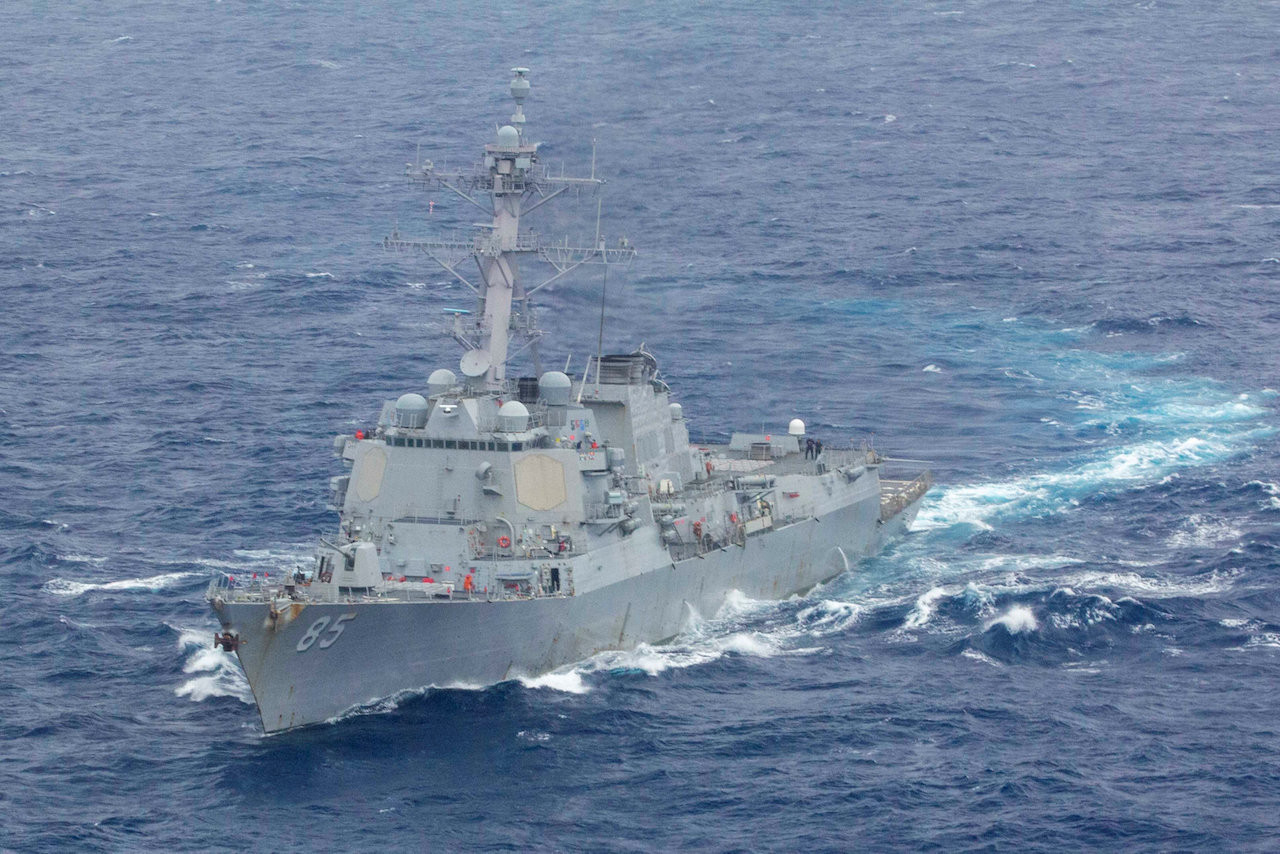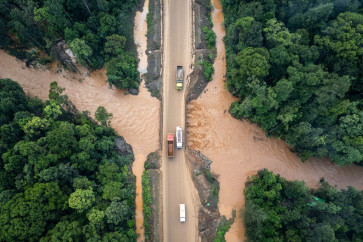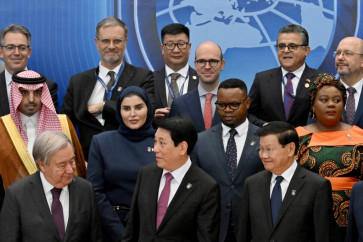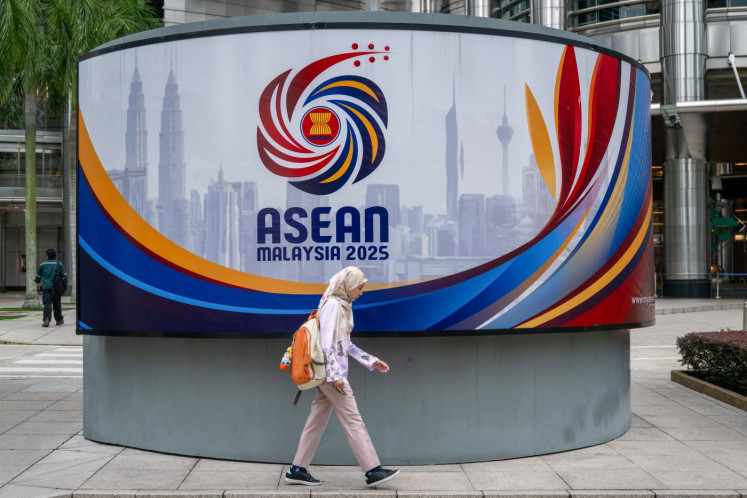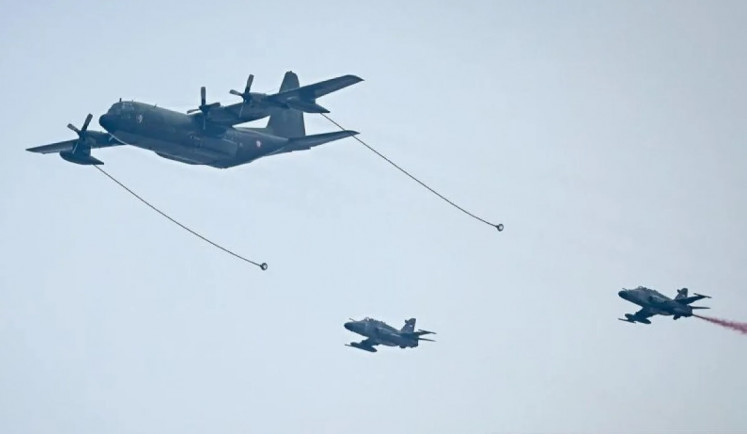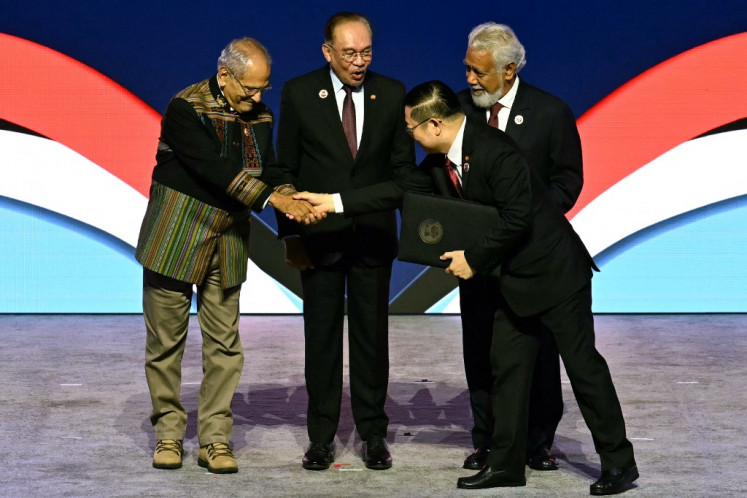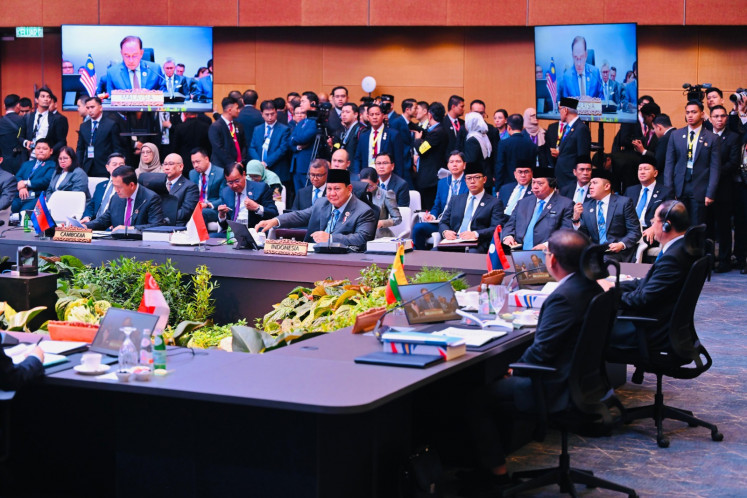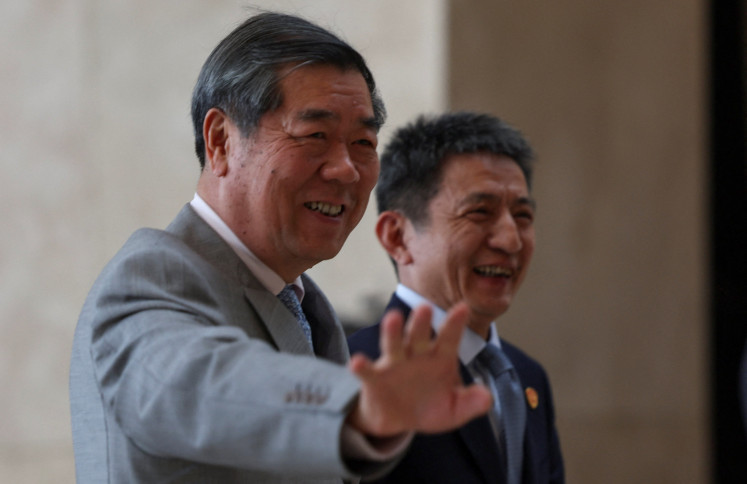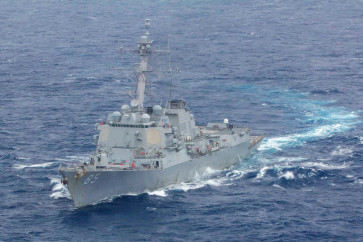Popular Reads
Top Results
Can't find what you're looking for?
View all search resultsPopular Reads
Top Results
Can't find what you're looking for?
View all search resultsIndonesia’s strategic defense concept in Indo-Pacific region
Its proximity to one of the main conflict flashpoints in the Indo-Pacific region, namely the South China Sea (SCS), leaves Indonesia prone to spill-over effects arising from possible incidents and conflicts in the region.
Change text size
Gift Premium Articles
to Anyone
T
he Total People’s Defense and Security System (Sishankamrata) is a mandate of the 1945 Constitution specifically Article 30 paragraph 2, which states that “The defense and security of the state is undertaken through a total people’s defense and security system with the Indonesian Military and the Indonesian National Police the main elements of force, and the entire people as the supporting element.” This implies that Sishankamrata is based on the mobilization of all national resources, namely the armed forces and the people, to defend Indonesia from any threats and to advance its national interests.
Sishankamrata draws its roots from three core values, namely kerakyatan (people-centered), kewilayahan (territorial-based) and kesemestaan (totality). The value of “people-centered” places the importance of people at the heart of national defense; the value of “territorial-based” emphasizes the preparedness of a self-reliant territorial defense posture in accordance with the distinct features of each territory; while the value of “totality” underscores the integration and unity of efforts across all national defense components in defending the nation-state against any military, nonmilitary or hybrid threats.
The three core values of Sishankamrata are operationalized through a layered-defense and defense-in-depth strategy that is based on the Mandala, or concentric circle, concept, where the innermost circle comprises Indonesia’s land territories up to the territorial sea; the inner circle spans from the territorial sea up to the exclusive economic zone (EEZ); and the outermost circle is the territory beyond the EEZ. These ideas place Sishankamrata as a strategic defense concept that shapes how Indonesia mobilizes its national resources to achieve its national defense and security objectives in a given strategic environment, especially the 21st century Indo-Pacific regional dynamics.
The 21st century Indo-Pacific regional construct is characterized by the confluence of various countries’ interests. In general, the building of the Indo-Pacific region reflects the growing intensity of interaction and connectedness between people, government and business in the 21st century that are facilitated by the Indian and Pacific Oceans.
The region is home to two-fifths of the global population and accounts for one-third of the world’s gross domestic product and global trade values. It also has a wealth of natural resources and strategic sea communication lines that serve as global traffic routes for people and goods.
This reality underlies the pattern of competition and cooperation between countries in the region. Besides the intensified cooperation in the region that aims to promote common prosperity, there are several unresolved territorial disputes that might become conflict flashpoints.
Furthermore, the rise of China, which is followed by the expansion in its ambition and influence in the region, raises many countries’ concerns about the threats it poses to their interests in the Indo-Pacific, especially the freedom of navigation in several strategic sea-communication lines.

